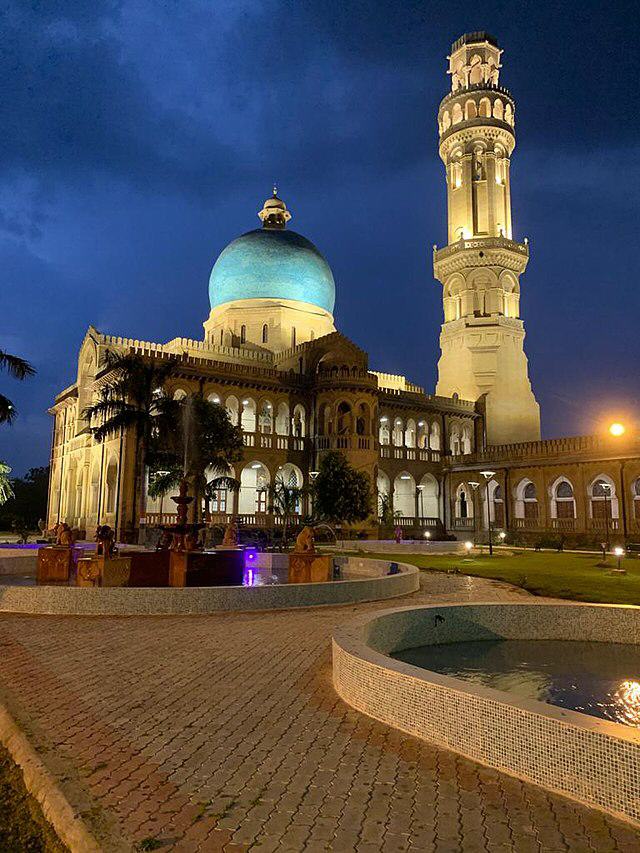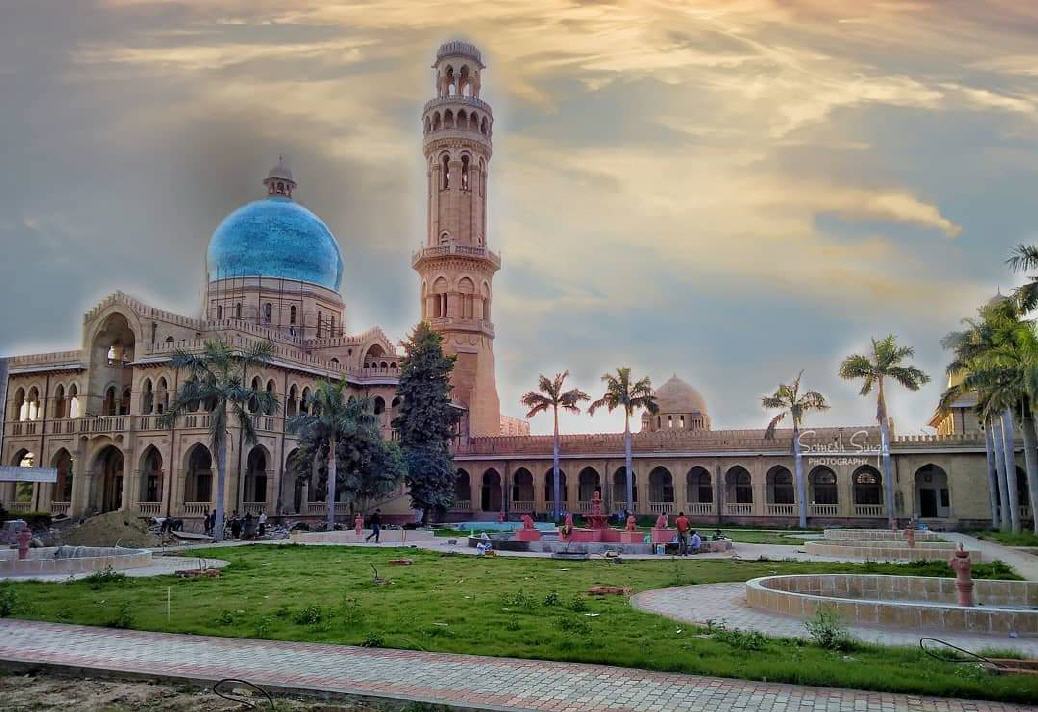University of Allahabad

Declercq was awarded Physics Professor Honoris Causa title of the University of Allahabad (Hon. Adj. Prof. Phys.). Although not in an employment affiliation with the University of Allahabad, the title is an honour and a celebration of many years of friendship with the physics department and, in particular, with respectable Prof Raja Ram Yadav and his team. Declercq's first visit to Allahabad dates from 2008 when he also visited Banaras Hindu University (Varanasi) and the Indian Institute of Science in Bangalore, but companionship with the Physicists of the involved faculties dates back from much earlier.
Interestingly, being a Flemish born Belgian, Declercq's connection with the university is not the first in history. Camille Bulcke, born in Ramskapelle in 1909, less than an hour ride from Declercq's birthplace, was also a Catholic University of Leuven alumnus and was a Bachelor in Engineering and Medicine. He went to India as a Jesuit and graduated with a MS in Sanscrit and Hindi in 1944 from Calcutta University. Consequently, he became a student at the University of Allahabad and insisted on writing his PhD thesis in Hindi. Hence he became the first person to write a PhD thesis in Hindi on the Ramayana. Later, he continued his career at Saint Xavier's College in Ranchi.
The University of Allahabad is a central collegiate university located in Allahabad, Uttar Pradesh, India. It was established in 1887 and is, therefore, almost as old as the Georgia Institute of Technology in Atlanta and is one of the oldest modern universities of India. Historically, the university is known as 'Oxford of the East' and stems from the Muir Central College, established in 1876 and named after Sir William Muir, who suggested establishing a Central University at Allahabad.
Allahabad is pronounced as Ilahabad, but is nowadays equally referred to as Prayagraj, its official name, with origins way back in history. 'Ilaha' means 'the Gods' and reflects the sacred location, being India's most sacred river confluence. Prayagraj stands for 'the king among the five river confluences of India'. On this marvellous location, Mughal emperor Akbar established a fortress between 1575 and 1584 and named the place Ilahabas (Abode of God). Shah Jahan changed it into Illahabad, later Latinized to Allahabad, which, to the Mughals, who were Muslims, also refer to "God". The location, known as Prayaga, was already mentioned as a pilgrimage place more than 3000 years ago, in Rigveda Parisista and alter in the Pali canons of Buddhism around 2500 years ago. The town of Allahabad is the birthplace of some remarkable persons in recent history, such as, for instance, Indira Gandhi (born Indira Nehru, 1917-1984, 3rd and sixth prime minister of India), Amitabh Bachchan (famous Bollywood actor, 1942) and Jawaharlal Nehru (1889-1964, India's first prime minister, he is the father of Indira Gandhi).
Concerning Mahatma Gandhi, unrelated to Indira Gandhi, we can cite an article, "Interview that prompted Mahatma Gandhi to pen 'Green Pamphlet'", by Rajiv Mani in The Times of India, Oct 2, 2019, which states the following:
ALLAHABAD: An unexpected interview with an English daily was a milestone in the making of Mahatma Gandhi as it prompted him to pen the famous 'Green Pamphlet' to expose the condition of Indian labourers and coolies in South Africa and human rights violations there. He had just returned to India from South Africa in 1896. On his way to Mumbai via Allahabad, he missed his train. "On his way to Bombay, Gandhi's train stopped at Allahabad for 45 minutes and he decided to visit the town and also buy medicines. The chemist took an unconscionable time in dispensing the medicines and as a result he missed the train," informs Prof Yogeshwar Tiwari, head of the department of Mediaeval and Modern History, Allahabad University. Gandhi took a room at a hotel called 'Kellner' and on the next day met the editor of an English daily. ÔThis unexpected interview laid the foundation of the series of incidents in Natal," Tiwari said. , Gandhi reached Pajkot on July 9, 1896, where he published the 'Green Pamphlet' on August 14, 1896. ''It was this unpleasant interview that prompted him to pen the Green Pamphlet", claimed Tiwari.
The Physics Department of the University of Allahabad was established in 1922 as a faculty, located in the Muir Central College premises. Theoretical physicist Albert Einstein (1879-1955) and astrophysicist Sir Arthur Eddington (1882-1944) proposed astrophysicist Meghnad Saha (1893-1956) to become the first professor and Head of the Department in 1923. Soon, the Department established itself as a world-renowned institute of science and specialized in emerging fields such as Spectroscopic Analysis of Atomic Spectra, Ionospheric Studies, Acoustic & Ultrasonic Measurements, X-ray Spectroscopy. Among many other famous scientists, we can mention Nobel Laureates like Arthur Compton (1892-1962), Sir Eddington, Sir Chandrasekhara Venkata Raman (1888-1970, famous for Raman Spectroscopy, but also Acousto-Optics), and Arnold Sommerfeld (1868-1951), who visited the Department. When Meghnad Saha resigned as head of the Department, quantum physicist Erwin Schrodinger (1887-1961) was selected to succeed and accepted the position. However, travelling to India was impossible because of WWII, whence the university had to offer the position to physicist Sir Kariamanikkam Srinivasa Krishnan (1898-1961) in 1942 instead. The latter was the co-discoverer of Raman scattering. The physics of acoustic waves was introduced in the Department by Rajendra Nath Ghosh (1892), who was, like acousto-optician N. S. Nagendra Nath, equally a co-worker of C. V. Raman.

